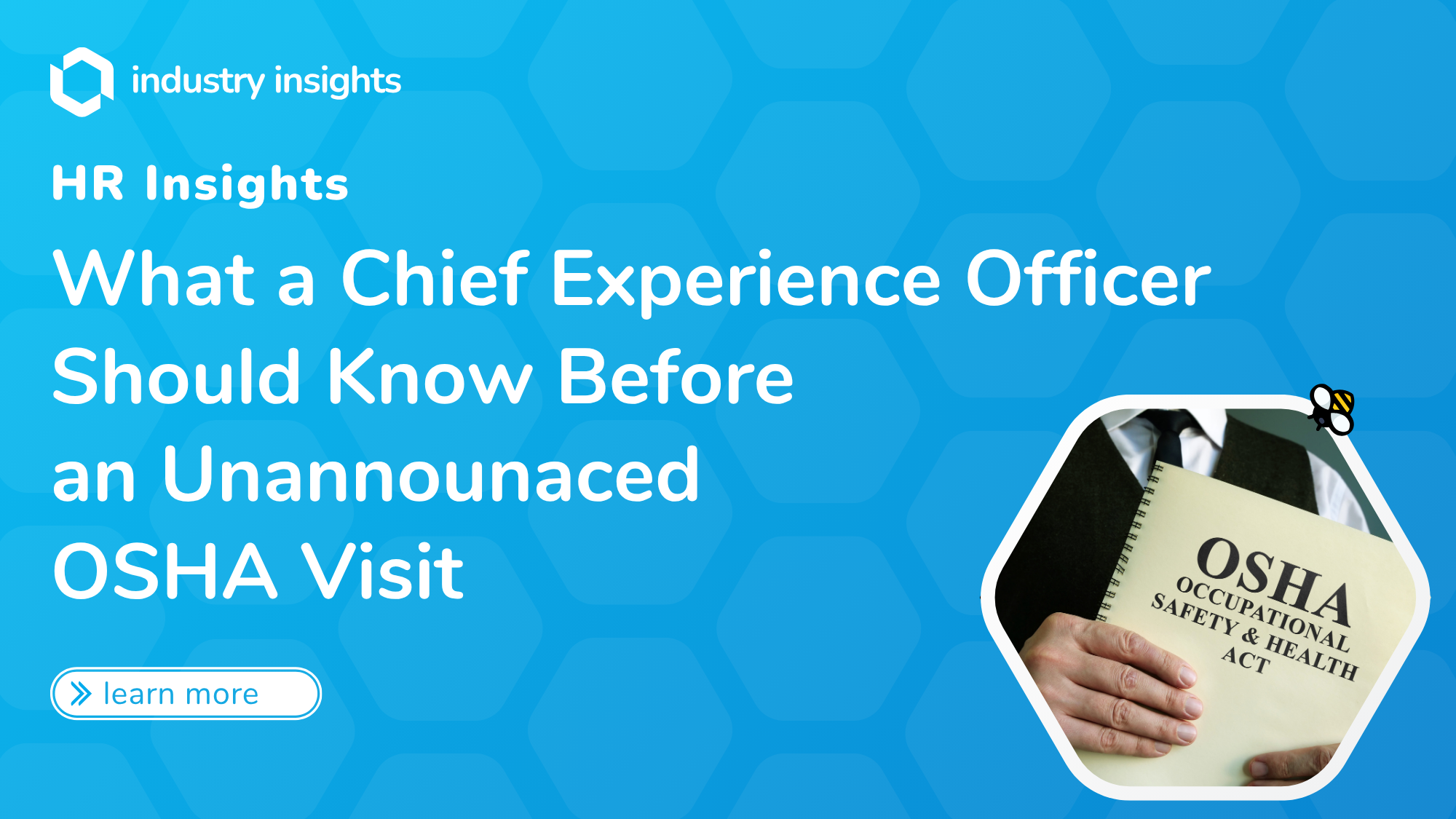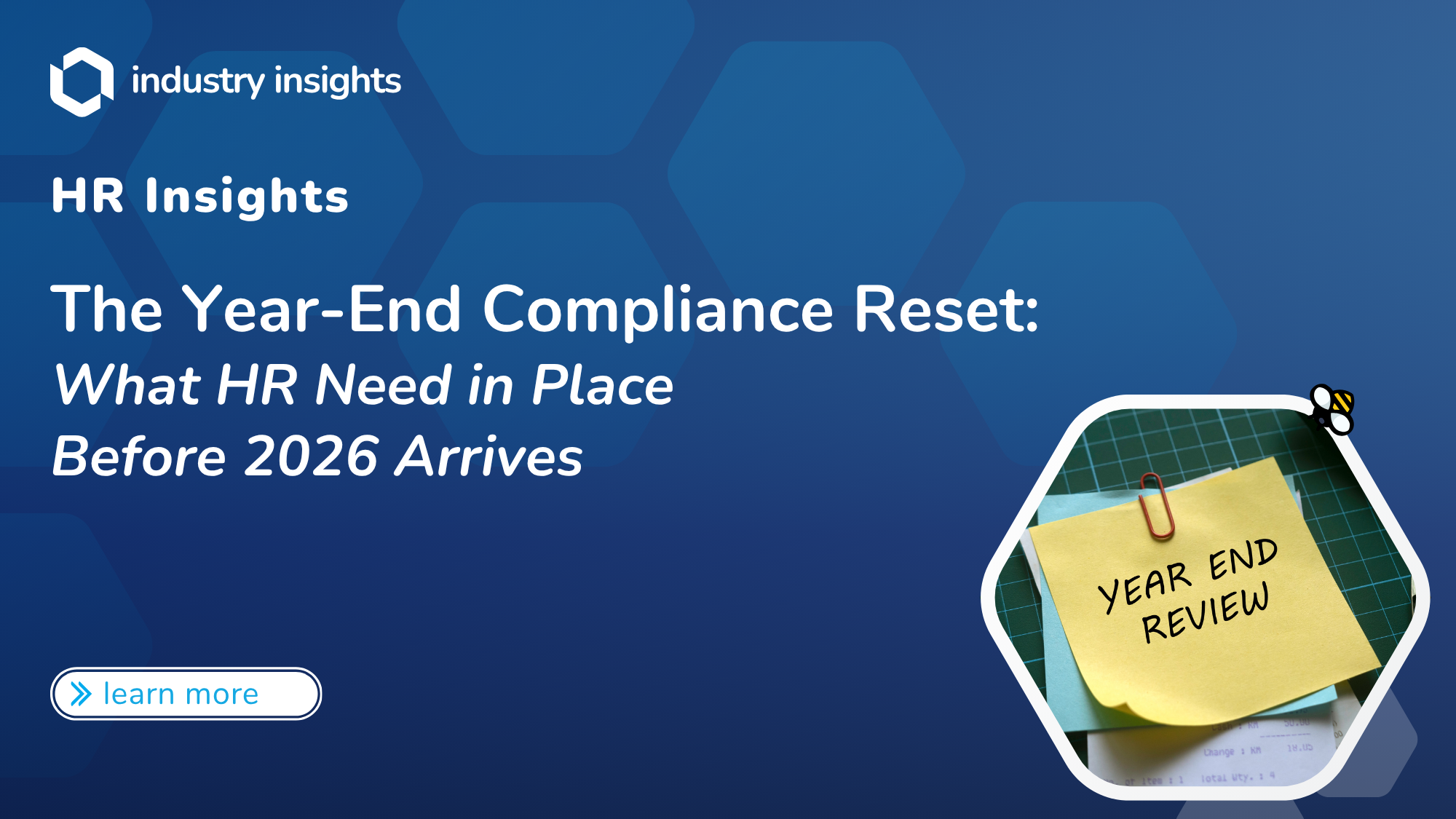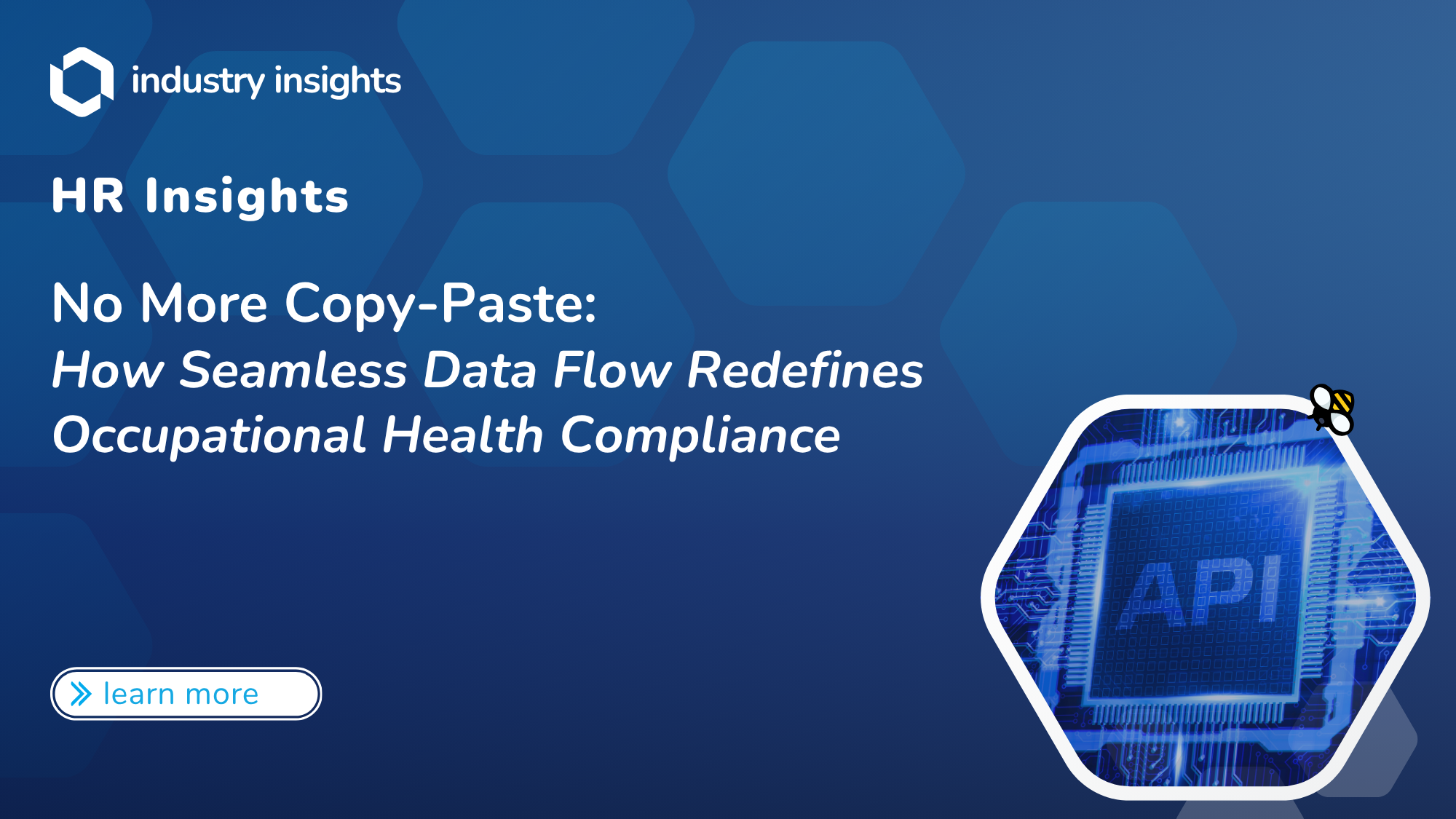Surprise OSHA inspections do more than test regulatory compliance – they test the credibility of your brand promise. Because citations, press releases, and social‑media chatter are public within hours, the worker‑ and customer‑experience you curate can unravel just as quickly. Understanding how inspections are triggered, how they unfold, and how the findings reverberate across reputation, talent, and customer loyalty is now table‑stakes for every CXO.
This brief turns OSHA’s latest guidance (2024–2025) into an experience‑centric playbook so you can protect trust, engagement, and enterprise value when the inspector arrives.

Why Inspections Are an Experience Risk
OSHA still ranks inspections by statutory priority – imminent danger, fatalities, complaints, and programmed visits—but the newest National Emphasis Programs (NEPs) push more attention onto high‑growth sectors such as warehousing and e‑commerce (OSHA, 2024). Citations in these sectors generate outsized headlines (e.g., the 2024 U.S. Senate report spotlighting Amazon’s warehouse injuries) that shape public perception faster than the fines themselves (Sanders, 2024).
CXO lens: An OSHA citation is now a customer‑experience event; consumers, investors, and job candidates search OSHA’s public database before they click “Buy” or “Apply.”
Mapping the Inspection Journey to Stakeholders
An OSHA inspection isn’t just a safety event – it’s a brand moment. From the instant an inspector arrives, every stage of the inspection becomes part of your organization’s public narrative. Employees might post about it. The media might show up. External reps could livestream concerns. That’s why it’s essential to map the inspection journey not just by regulatory steps, but by stakeholder impact – from the shop floor to the C-suite. Here’s how to anticipate key touchpoints and align Safety, Legal, Comms, and Customer Care around a unified, well-timed response:

Reputation & Financial Exposure – The Double Bottom Line
Fines hurt – but reputational damage lingers longer. OSHA’s updated penalty structure for 2025 may grab headlines with six-figure fines, but for many organizations, the real cost lies in public perception and stakeholder trust. A single citation can trigger local media buzz, social media scrutiny, or even national coverage – especially if it’s willful or repeated. The result? Eroded employee morale, increased oversight from partners, and lasting reputational scars. This dual-impact lens – financial and experiential – is what today’s leaders must factor into every compliance decision:

Top 10 Citations – Root Cause, Not Just Regulations
Workplace safety is no guessing game – and when OSHA shows up, your compliance strategy shouldn’t be either. Every year, thousands of employers get tripped up by the same hazards, earning themselves costly citations and avoidable headaches. Whether you’re in construction, manufacturing, or healthcare, understanding the most frequently cited OSHA standards can help you stay one step ahead. Below is a snapshot of the top 10 violations for FY 2024 – aka your compliance cheat sheet:
- Fall protection – 29 CFR 1926.501
- Hazard communication – 1910.1200
- Lockout/Tag‑out – 1910.147
- Ladders – 1926.1053
- Respiratory protection – 1910.134
- Powered industrial trucks – 1910.178
- Fall‑protection training – 1926.503
- Scaffolding – 1926.451
- Eye/face protection – 1926.102
- Machine guarding – 1910.212
Preventive tip: Use this list as an internal audit checklist at least quarterly.
Record Keeping Hot Spots
- OSHA 300/301/300A must be retained and update‑ready for five years (OSHA, n.d.).
- Keep sampling data, calibration certificates, and SDSs in a single digital repository with field access; CSHOs increasingly ask to view documents during the walkaround rather than at closing.
- Create an “inspection binder” (physical or electronic) with: current written programs, last five years of logs, results of any NEP‑related audits, and your respiratory protection medical clearance roster.
Industrial Hygiene & Sampling Tactics
Draft your sampling plan before the CSHO arrives. The OSHA Technical Manual recommends pre‑assembling cassettes, charging pumps, and documenting calibration data in the OIS worksheet (OHSA, n.d.).
Pro tips:
- Chain‑of‑custody: use tamper‑evident seals (OSHA‑21) to match CSHO rigor.
- Duplicate sampling: request employer splits or provide your own media for parallel samples.
- Environmental log: record temperature, barometric pressure, and process changes; these data often become your defense if OSHA’s lab values appear skewed.
Penalties
OSHA’s January 7, 2025 inflation memo sets the figures that will appear on your citation. Knowing the ceiling helps you weigh whether to contest, informally settle, or invest in rapid abatement (OSHA, 2025).

Penalty ceilings were raised again on Jan 7 2025 (OSHA, 2025). Yet practitioners note that press releases and database flags – not fines – cause the longest‑lasting brand damage (Seyfarth Shaw LLP, 2022).
Culture Signals OSHA (and Customers) Notice
Top OSHA citations aren’t just compliance issues – they’re culture signals. Fall protection, hazard communication, and lockout/tag-out continue to top the list in FY 2024, but what’s behind those violations often points to something deeper: gaps in training, communication, and employee engagement. Studies show that organizations with strong safety cultures not only face fewer fines – they also outperform financially. And with employee experience now tied directly to customer loyalty and revenue growth, safety lapses should be seen as early warnings, not isolated events. For CXOs, the message is clear: frontline safety and customer sentiment are more connected than ever.
- Top 10 Citations FY 2024 still begin with fall protection, hazard communication, and lockout/tag‑out osha.gov.
- Research shows firms with strong safety culture incur fewer fines and enjoy higher financial returns link.springer.com.
- HBR finds employee experience now drives customer experience premiums of up to 16 % hbr.org.
Takeaway for CXOs: Safety lapses aren’t siloed issues; they are leading indicators of disengagement that ripple straight to Net Promoter Score.
Data Stewardship and Transparency
Regulators – and journalists – expect clean audit trails. OSHA requires injury and illness logs be retained and updated for five years (OSHA, n.d.). A fractured data architecture invites credibility gaps during an inspection and erodes stakeholder trust afterward.
CXO action items
- Embed OSHA logs, environmental metrics, and DEI data in one ESG‑grade platform with immutable audit trails.
- Run quarterly “data‑fire drills” to ensure one‑click retrieval of any record an inspector (or analyst) may request.
- Publish anonymized safety KPIs in annual impact reports to pre‑empt reputational fallout.
Experience-First Inspection Playbook
In today’s workplace, inspections aren’t just regulatory – they’re reputational. Every touchpoint, from the front desk to the closing conference, shapes how employees, customers, and the public perceive your brand. That’s why leading organizations are building experience-first inspection playbooks that go beyond checklists and clipboards. By aligning Safety, Legal, Communications, and Customer Experience teams from the start, you can turn an OSHA visit into a moment of clarity – not chaos. Here’s how to prepare, respond, and recover in a way that protects both people and perception:
- Pre‑visit: Use the NEP list as a predictive heat‑map; brief customer‑service and social‑media teams on likely scenarios.
- Day 0 (Arrival): Front‑desk script validates inspector credentials, then triggers a CX War‑Room call (Safety, Comms, Legal, Brand).
- Walk‑Around: Empower floor leaders to narrate hazard controls; offer inspectors split IH samples to demonstrate transparency.
- Closing Conference: Have a concise, human‑focused statement ready: “Our priority is a safe, engaging workplace—we’ve already begun addressing the findings.”
- Decide whether to contest or settle; integrate citation learnings into your Voice of Employee and Voice of Customer dashboards.
Turning Compliance into Competitive Advantage
Compliance isn’t just about avoiding penalties – it’s about building trust, inside and out. In today’s competitive landscape, a strong safety record signals more than regulatory diligence – it reflects leadership, values, and operational excellence. From brand positioning to talent attraction and ESG scoring, organizations that treat safety as a strategic pillar are reaping the rewards. As SHRM notes, morale and engagement are top HR priorities in 2024, and OSHA performance is becoming a front-and-center proxy for both. Here’s how to flip the script and turn compliance into a competitive edge:
- Brand‑level narrative: “A safe workplace is the customer experience.”
- Talent magnet: SHRM reports that 81 % of HR pros rank morale & engagement as 2024’s top priority (SHRM, 2024) – OSHA performance is a visible proxy.
- Market premium: Analysts increasingly weight safety metrics in ESG scores that influence procurement decisions.
Conclusion
An OSHA surprise visit is no longer a back‑office legal matter; it’s a front‑page customer‑experience test. CXOs who integrate safety metrics into the broader experience strategy – backed by rigorous data governance and clear cross‑functional playbooks – can turn regulatory scrutiny into a showcase of brand integrity. The ROI is measured in trust: trusted employees, trusted customers, and trusted investors.
Download the Whitepaper
Sources
- American Psychological Association. (2024). 2023 Work in America™ Survey. https://www.apa.org/pubs/reports/work-in-america/2023-workplace-health-well-being
- Harvard Business Review. (2023, April 5). Engaged employees create better customer experiences. https://hbr.org/2023/04/engaged-employees-create-better-customer-experiences
- Occupational Safety and Health Administration. (2025, January 7). 2025 annual adjustments to OSHA civil penalties. https://www.osha.gov/memos/2025-01-07/2025-annual-adjustments-osha-civil-penalties
- Occupational Safety and Health Administration. (2024, April 1). Worker walkaround representative designation process: Final rule. https://www.osha.gov/worker-walkaround/final-rule
- Occupational Safety and Health Administration. (2024). Top 10 most frequently cited standards, FY 2024. https://www.osha.gov/top10citedstandards/
- Occupational Safety and Health Administration. (2023, June 14). National Emphasis Program on warehousing and distribution center operations (CPL 03‑00‑026). https://www.osha.gov/sites/default/files/enforcement/directives/CPL_03-00-026.pdf
- Occupational Safety and Health Administration. (n.d.). 29 CFR 1904.33: Retention and updating. https://www.osha.gov/laws-regs/regulations/standardnumber/1904/1904.33
- Sanders, B. (2024, Dec.). Senate report alleges Amazon rejected warehouse safety recommendations due to productivity concerns. AP News. https://apnews.com/article/eb5b72dd501be0bcce9d919c34731290
- Seyfarth Shaw LLP. (2022, Nov 29). OSHA citation liability 2023—Don’t lose the forest for the trees. https://www.seyfarth.com/news-insights/osha-citation-liability-2023-dont-lose-the-forest-for-the-trees.html
- Wang, Y., & Verma, V. (2024). Nothing to fear: Strong corporate culture and workplace safety. Journal of Financial Services Research. https://link.springer.com/article/10.1007/s11156-024-01264-6
- SHRM Research Institute. (2024). 2023‑24 State of the Workplace Report. https://www.shrm.org/content/dam/en/shrm/research/2023-2024-State-of-the-Workplace-Report.pdf




